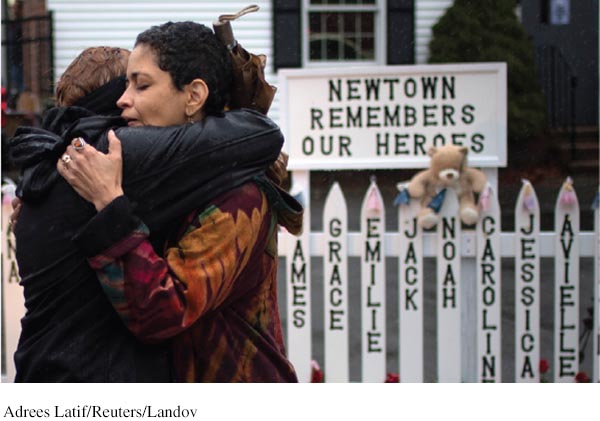13.7 Does “Disorder” Equal “Danger”?
LOQ 13-
Movies and television sometimes portray people with psychological disorders as homicidal. Mass killings in 2012 by apparently disturbed people in a Colorado theater and a Connecticut elementary school reinforced public perceptions that people with psychological disorders are dangerous (Barry et al., 2013; Jorm et al., 2012). “People with mental illness are getting guns and committing these mass shootings,” said Speaker of the U.S. House Paul Ryan (Editorial Board, New York Times, 2015). In one survey, 84 percent of Americans agreed that “increased government spending on mental health screening and treatment” would be a “somewhat” or “very” effective “approach to preventing mass shootings at schools” (Newport, 2012).
Do disorders actually increase risk of violence? And can clinicians predict who is likely to do harm? In real life, the vast majority of violent crimes are committed by those with no diagnosed disorder (Fazel & Grann, 2006; Skeem et al., 2016). Moreover, mental disorders seldom lead to violence, and clinical prediction of violence is unreliable. Said simply, most violent criminals are not mentally ill, and most mentally ill people are not violent.

The few people with disorders who do commit violent acts tend to be either those who experience threatening delusions and hallucinated voices that command them to act, or those who abuse substances (Douglas et al., 2009; Elbogen & Johnson, 2009; Fazel et al., 2009, 2010). People with disorders also are more likely to be victims than perpetrators of violence (Marley & Bulia, 2001). Indeed, reported the U.S. Surgeon General’s Office (1999, p. 7), “There is very little risk of violence or harm to a stranger from casual contact with an individual who has a mental disorder.” People with mental illness commit proportionately little gun violence. Thus, focusing gun restrictions only on mentally ill people is unlikely to significantly reduce gun violence (Friedman, 2012).
410
Better predictors of violence are use of alcohol or drugs, previous violence, and gun availability. The mass-
The findings described in this chapter make clear the need for research and treatment to help the growing number of people, especially teenagers and young adults, who suffer the pain of a psychological disorder. Although mindful of their pain, we can also be encouraged by the many successful people who have pursued brilliant careers while enduring psychological difficulties. Eighteen of them were U.S. presidents, according to one psychiatric analysis of their biographies (Davidson et al., 2006). The bewilderment, fear, and sorrow caused by psychological disorders are real. But, as Chapter 14 shows, hope, too, is real.